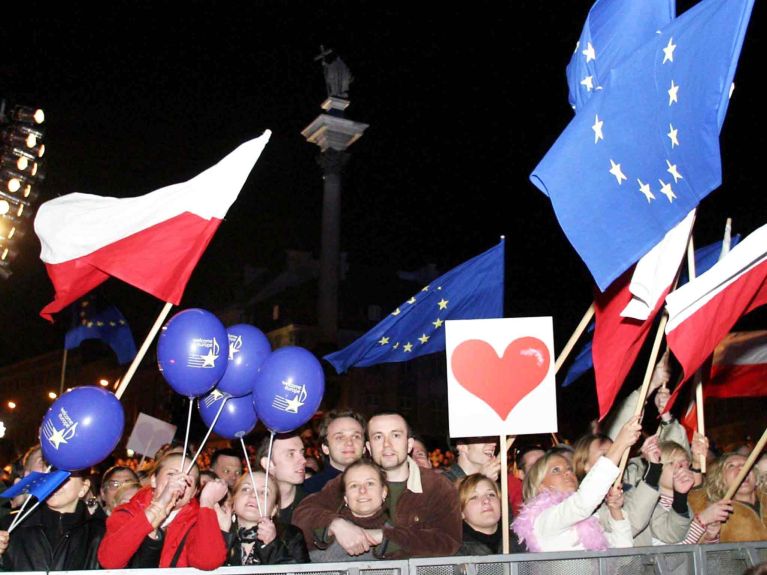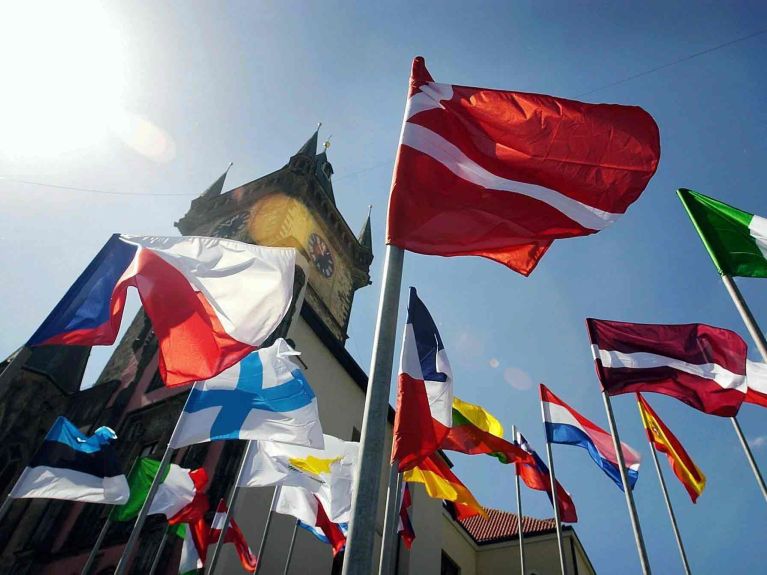A historic moment for Europe
On 1 May 2004 ten Central and Eastern European countries joined the EU. The EU’s eastern expansion marked the end of division in Europe.

It was the largest single expansion in the history of the European Union. On 1 May 2004 ten Central and Eastern European countries joined the EU. Fifteen years after the Fall of the Berlin Wall, the eastern expansion of the European Union marked a historic step in closing the divides which had formed in Europe during the decades of the Cold War.
Which countries joined the EU in 2004?
In 2004 the Czech Republic, Hungary, Poland, Slovakia and Slovenia joined the EU, along with the Baltic states of Estonia, Latvia and Lithuania, and the Mediterranean islands of Malta and Cyprus. This brought membership of the Union up from 15 to 25. With 75 million new citizens, the EU increased its population by over a quarter overnight.

The Bundestag had given almost unanimous support to the expansion in a July 2003 vote. Politicians of all stripes emphasised the historic significance of the moment. For example, Germany’s then Foreign Minister Joschka Fischer spoke in parliament about the division and reunification of Germany. “In this round of expansion which adds ten new member states, what matters isn’t just that this is the largest expansion, although on those grounds alone it would deserve to be designated as ‘historic’,” he said. “At the same time, the majority of the new members are our member states which until recently had to live the other side of the Iron Curtain. That means that in addition to being the largest expansion, it also overcomes the former Iron Curtain.”
How many times has the EU been expanded since it was founded?
Along with France, Italy, Belgium, the Netherlands and Luxembourg, Germany is one of the six founder members of the EU which signed the Treaty of Rome on 25 March 1957. That event is regarded as the moment the European Union was born. The EU has been expanded seven times since then. In 1973 Denmark, Ireland and the United Kingdom joined, although the UK became the first EU member state to leave the union at the end of January 2020.
Subsequent rounds of expansions saw Greece (1981), Portugal and Spain (1986), and Austria, Finland and Sweden (1995) join the EU. After the eastern expansion in 2004 when ten states joined, Bulgaria and Romania joined in 2007, followed most recently by Croatia in 2013. Some 450 million people live in the current 27 EU states.
Will the EU get even bigger in future?
More countries are expected to join the union over the next few years. There are currently ten official or potential accession candidates. In late 2023 EU member states agreed to start accession talks with Ukraine and Moldova. German Chancellor Olaf Scholz assessed the decision as a “strong sign of support” for Ukraine as it defends itself against Russian aggression.


